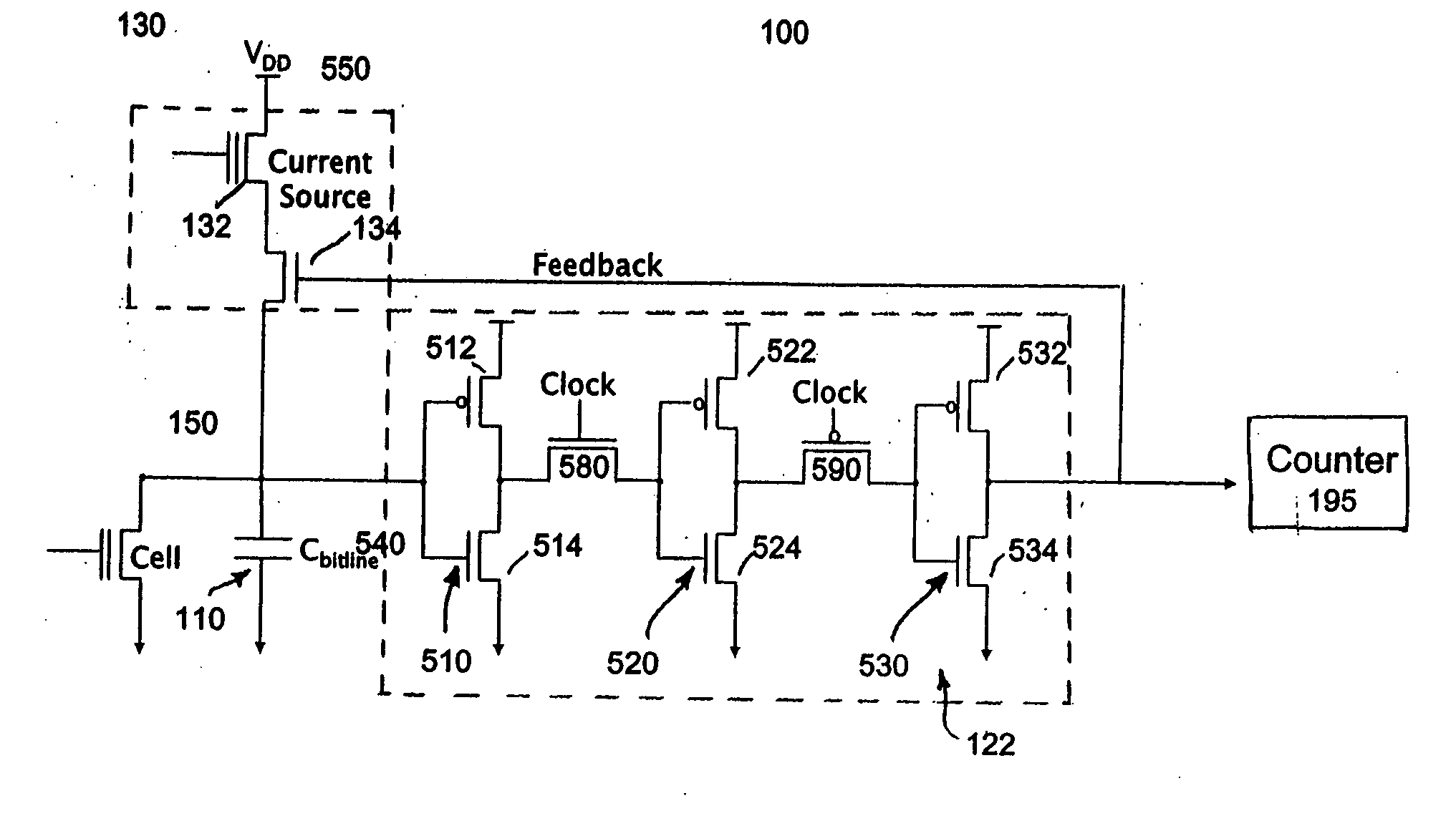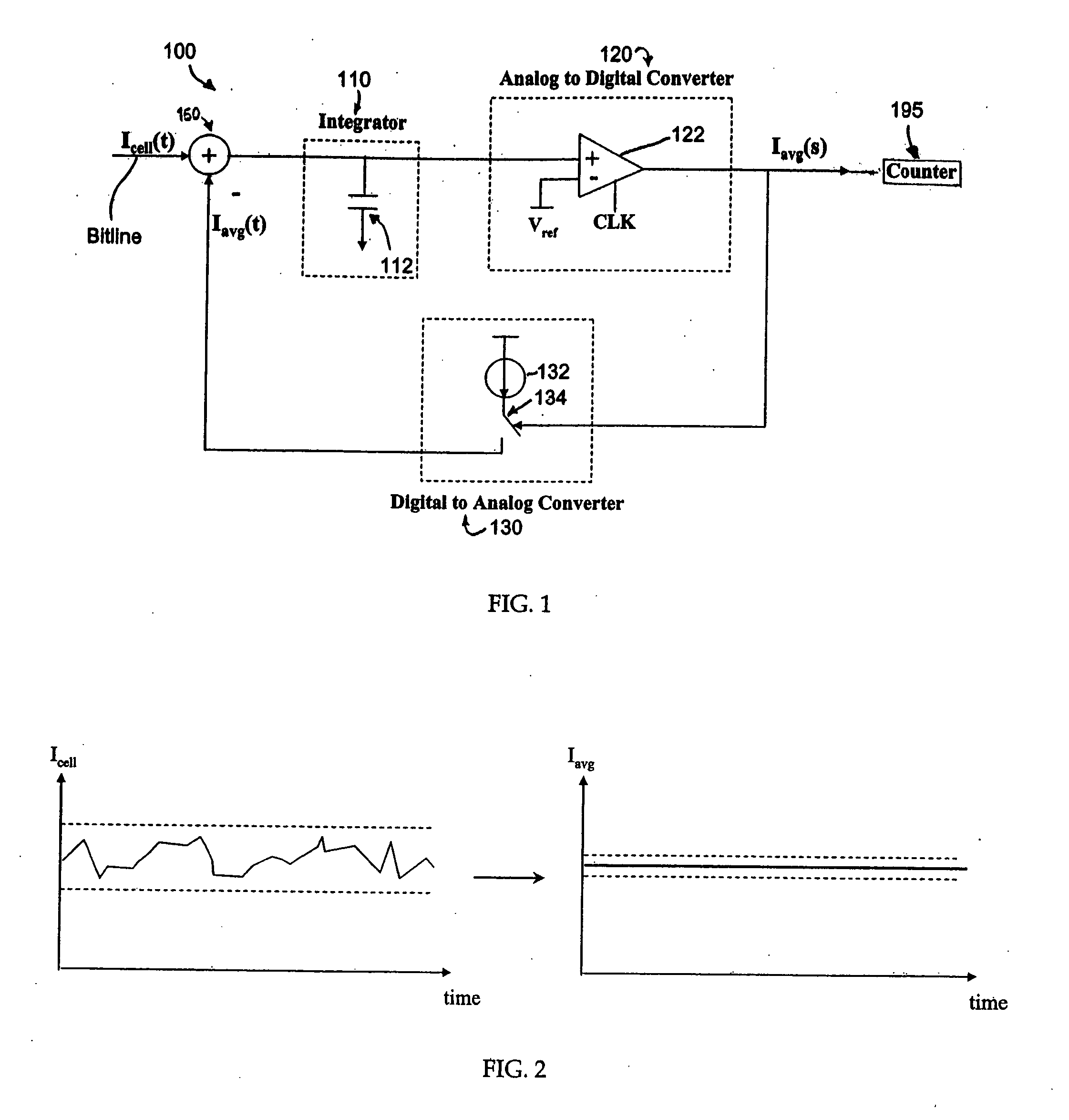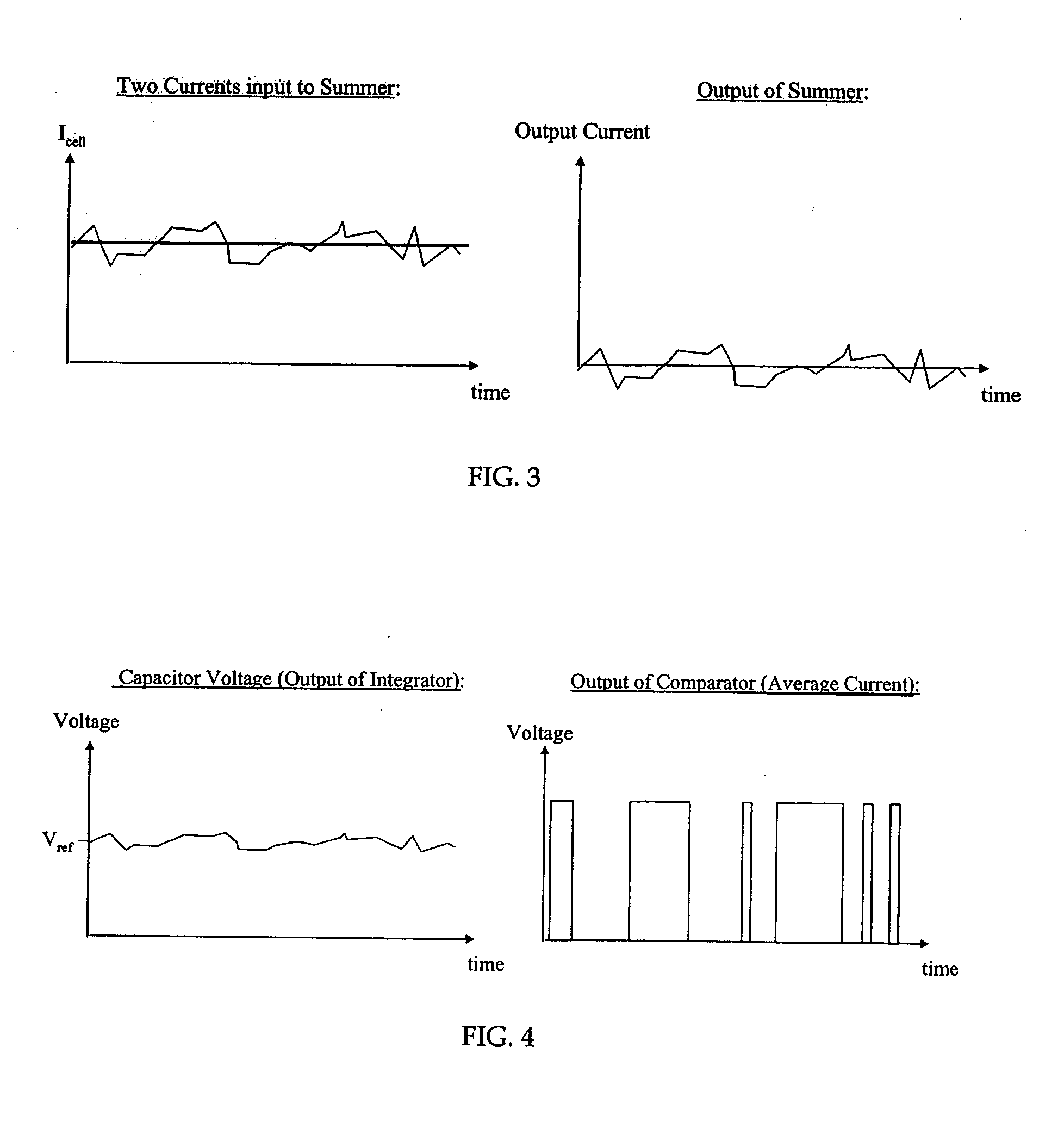Method and apparatus for sensing flash memory using delta sigma modulation
a technology of delta sigma and flash memory, applied in the field of methods and apparatus for sensing flash memory using delta sigma modulation, can solve the problems of loss of information previously stored by the integrator, relatively slow settling time of reference voltage, etc., and achieve accurate analog comparison and high precision circuitry
- Summary
- Abstract
- Description
- Claims
- Application Information
AI Technical Summary
Benefits of technology
Problems solved by technology
Method used
Image
Examples
Embodiment Construction
[0024]FIG. 1 illustrates a block diagram of a sense amplifier circuit 100 constructed in accordance with an exemplary embodiment of the invention. The circuit 100 comprises an integrator 110, an analog-to-digital converter 120 (“ADC”), and a digital-to-analog converter 130 (“DAC”). For this illustrated embodiment, the integrator 110 is implemented as a capacitor 112, the ADC 120 is implemented as a simple clocked comparator 122, and the DAC 130 is implemented as a current source 132 and switch 134 controlled by the output of the ADC 120. Referring also to FIGS. 2 and 3, the inputs to the circuit 100 are the flash cell current Icell and the previous average cell current output Iavg from the DAC 130, both of which are shown in FIG. 2. The currents Icell, Iavg, are combined at a summer 150. FIG. 2 illustrates examples of cell current input to the sense amplifier of the exemplary invention and the desired current output. The flash cell current Icell varies with time due to adjacent circ...
PUM
 Login to View More
Login to View More Abstract
Description
Claims
Application Information
 Login to View More
Login to View More - R&D
- Intellectual Property
- Life Sciences
- Materials
- Tech Scout
- Unparalleled Data Quality
- Higher Quality Content
- 60% Fewer Hallucinations
Browse by: Latest US Patents, China's latest patents, Technical Efficacy Thesaurus, Application Domain, Technology Topic, Popular Technical Reports.
© 2025 PatSnap. All rights reserved.Legal|Privacy policy|Modern Slavery Act Transparency Statement|Sitemap|About US| Contact US: help@patsnap.com



